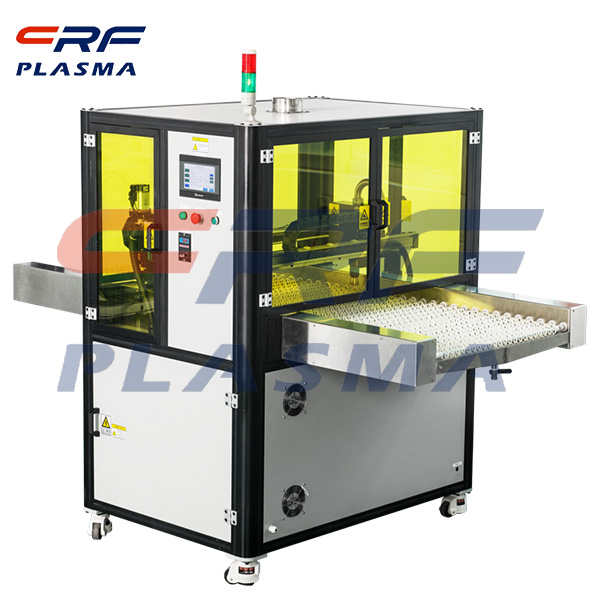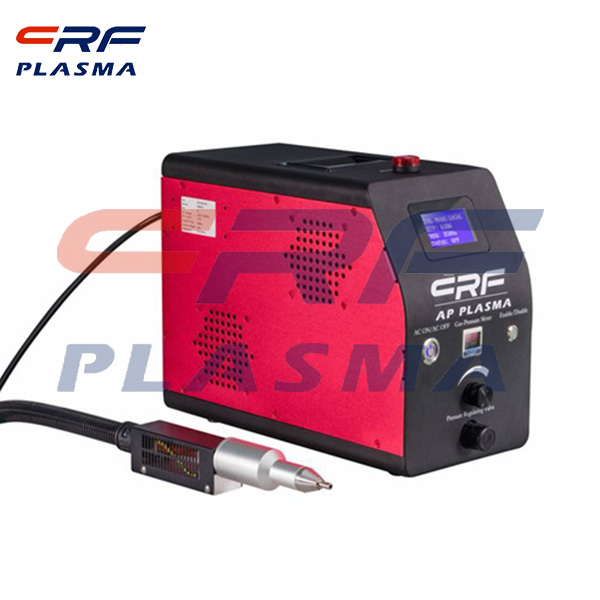
Welcome to Shenzhen Sing Fung Intelligent Manufacturing Co., Ltd.
E-mail:shaobo@sfi-crf.com
What are the collisions between particles in the plasma cleaning machine
- Categories:Company Dynamics
- Author:plasma cleaning machine-surface treatment equipment-CRF plasma machine-Sing Fung Intelligent Manufacturing
- Origin:
- Time of issue:2021-03-27
- Views:
(Summary description)The plasma produced by the plasma cleaner contains a variety of different particles, whose motion rules determine the properties of the plasma environment. Today we will discuss the types of particle collisions. The collision between particles in plasma can be roughly divided into two kinds: elastic collision and inelastic collision. 1. Elastic collision. In the process of plasma collision, the momentum and total kinetic energy of particles are conserved, and the internal energy of the particles involved in the collision remains unchanged. No new particles or photons are generated, but the velocity of the particles will be changed, and the conversion of momentum and kinetic energy will take place. This kind of collision is called elastic collision. 2. Inelastic collision. In the collision process of plasma, the total momentum of particles is conserved, the total kinetic energy is not conserved, and the internal energy of at least one particle changes, such as the companion of new particles and the companion of photons. This kind of collision is called inelastic collision. Because the internal energy of the plasma particle in the plasma cleaning machine changes, the state of the particle will also change, sometimes accompanied by radiation, and even produce new particles, such as the excitation, ionization and fusion process in the plasma. The following table lists the types of inelastic collisions. In the inelastic collision between electrons and atoms, the kinetic energy of electrons can be converted into the internal energy of atoms with high efficiency, and the energy can be completely converted when the energy is high. In an inelastic collision between an ion and an atom, the electron's kinetic energy is low, and at high levels it is only half of its energy. Therefore, as long as the energy of the electron in the plasma cleaning machine is greater than the excitation energy and ionization energy of the atom, the atom is likely to be excited or ionized, and the ion must have twice the excitation energy or ionization energy of the atom, it can be excited or ionized. In fact, when the energy of the ion in the plasma cleaner is several times that of the ionization energy, the probability of inelastic collision is still very small. Only when the ion speed is the same as the electron speed, the probability of inelastic collision can be compared with that of the electron.
What are the collisions between particles in the plasma cleaning machine
(Summary description)The plasma produced by the plasma cleaner contains a variety of different particles, whose motion rules determine the properties of the plasma environment. Today we will discuss the types of particle collisions. The collision between particles in plasma can be roughly divided into two kinds: elastic collision and inelastic collision.
1. Elastic collision.
In the process of plasma collision, the momentum and total kinetic energy of particles are conserved, and the internal energy of the particles involved in the collision remains unchanged. No new particles or photons are generated, but the velocity of the particles will be changed, and the conversion of momentum and kinetic energy will take place. This kind of collision is called elastic collision.
2. Inelastic collision.
In the collision process of plasma, the total momentum of particles is conserved, the total kinetic energy is not conserved, and the internal energy of at least one particle changes, such as the companion of new particles and the companion of photons. This kind of collision is called inelastic collision.
Because the internal energy of the plasma particle in the plasma cleaning machine changes, the state of the particle will also change, sometimes accompanied by radiation, and even produce new particles, such as the excitation, ionization and fusion process in the plasma. The following table lists the types of inelastic collisions. In the inelastic collision between electrons and atoms, the kinetic energy of electrons can be converted into the internal energy of atoms with high efficiency, and the energy can be completely converted when the energy is high. In an inelastic collision between an ion and an atom, the electron's kinetic energy is low, and at high levels it is only half of its energy.
Therefore, as long as the energy of the electron in the plasma cleaning machine is greater than the excitation energy and ionization energy of the atom, the atom is likely to be excited or ionized, and the ion must have twice the excitation energy or ionization energy of the atom, it can be excited or ionized. In fact, when the energy of the ion in the plasma cleaner is several times that of the ionization energy, the probability of inelastic collision is still very small. Only when the ion speed is the same as the electron speed, the probability of inelastic collision can be compared with that of the electron.
- Categories:Company Dynamics
- Author:plasma cleaning machine-surface treatment equipment-CRF plasma machine-Sing Fung Intelligent Manufacturing
- Origin:
- Time of issue:2021-03-27 10:22
- Views:
What are the collisions between particles in the plasma cleaning machine:
The plasma produced by the plasma cleaner contains a variety of different particles, whose motion rules determine the properties of the plasma environment. Today we will discuss the types of particle collisions. The collision between particles in plasma can be roughly divided into two kinds: elastic collision and inelastic collision.

1. Elastic collision.
In the process of plasma collision, the momentum and total kinetic energy of particles are conserved, and the internal energy of the particles involved in the collision remains unchanged. No new particles or photons are generated, but the velocity of the particles will be changed, and the conversion of momentum and kinetic energy will take place. This kind of collision is called elastic collision.
2. Inelastic collision.
In the collision process of plasma, the total momentum of particles is conserved, the total kinetic energy is not conserved, and the internal energy of at least one particle changes, such as the companion of new particles and the companion of photons. This kind of collision is called inelastic collision.
Because the internal energy of the plasma particle in the plasma cleaning machine changes, the state of the particle will also change, sometimes accompanied by radiation, and even produce new particles, such as the excitation, ionization and fusion process in the plasma. The following table lists the types of inelastic collisions. In the inelastic collision between electrons and atoms, the kinetic energy of electrons can be converted into the internal energy of atoms with high efficiency, and the energy can be completely converted when the energy is high. In an inelastic collision between an ion and an atom, the electron's kinetic energy is low, and at high levels it is only half of its energy.
Therefore, as long as the energy of the electron in the plasma cleaning machine is greater than the excitation energy and ionization energy of the atom, the atom is likely to be excited or ionized, and the ion must have twice the excitation energy or ionization energy of the atom, it can be excited or ionized. In fact, when the energy of the ion in the plasma cleaner is several times that of the ionization energy, the probability of inelastic collision is still very small. Only when the ion speed is the same as the electron speed, the probability of inelastic collision can be compared with that of the electron.
Scan the QR code to read on your phone

TEL:0755-3367 3020 / 0755-3367 3019

E-mail:sales-sfi@sfi-crf.com

ADD:Mabao Industrial Zone, Huangpu, Baoan District, Shenzhen


















